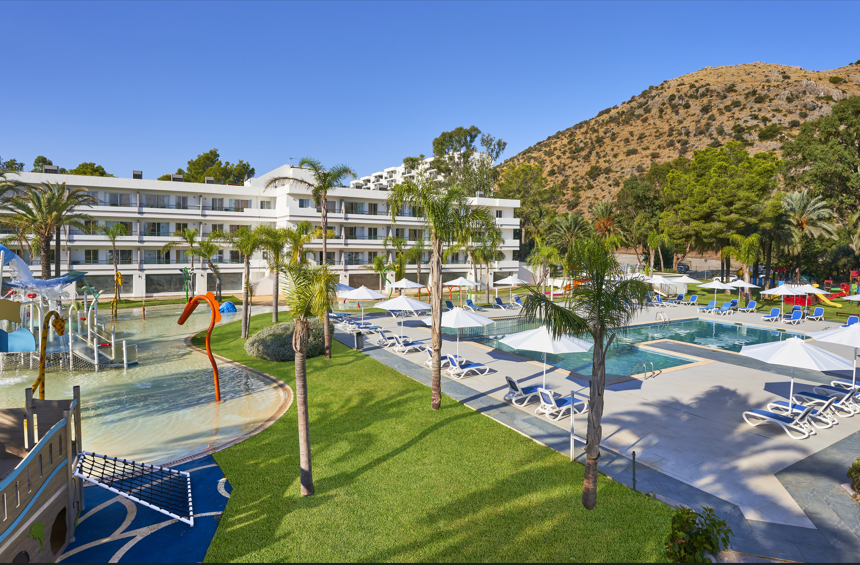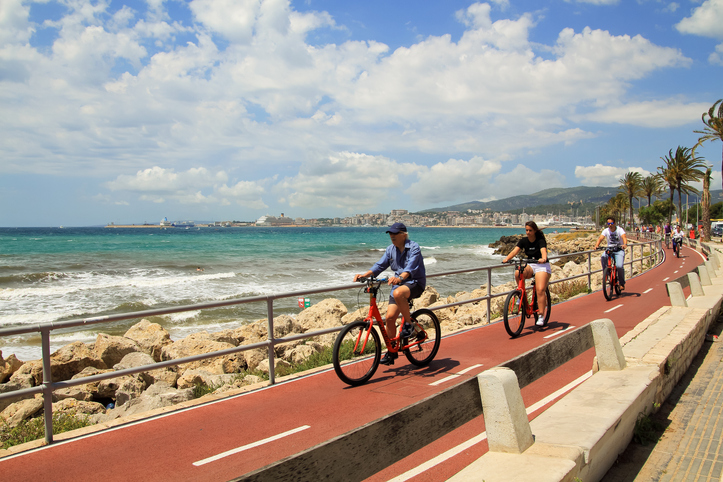Palma surprises its residents and visitors alike on a daily basis, with a non-stop cultural schedule and vibrant districts that are bursting with life. One such example is the colourful and cosmopolitan Santa Catalina neighbourhood
If you pass through the walls of Palma’s Old Town, you’ll find the Santa Catalina neighbourhood lying next to the famous Es Baluard museum and the seafront promenade. This iconic neighbourhood, with a personality of its own, is the talk of the town, accommodating everyone from the most chic of audiences to more bohemian characters, with a notable explosion of diverse textures, sensations and vibes. This neighbourhood embraces a different lifestyle; metropolitan and laid-back, yet retaining Palma’s distinctive charm. This trendy district represents a breath of fresh air in the most vintage of manners.
Its name derives from the Mallorcan trader Ramón Salelles. Cast adrift by the choppy waters, Salelles promised Saint Catalina (Santa Catalina) that, if he survived, he would build a hospital. This neighbourhood has changed from a traditional fishermen village to a district that is ruled by aesthetics and design. In this ‘new district’, tradition and modernity co-exist in total harmony, with visitors able to find everything from vintage clothing stores to shops selling cutting-edge accessories.
Its cool retro vibe also serves to inspire artists and designers to create their own pieces. Its atmosphere has also led many Swedish and Scandinavian investors to cast their eyes in the direction of Santa Catalina. The neighbourhood’s reputation has improved with the renovation of different houses and apartments, increasingly elevating its status to that of a modern and cosmopolitan district. Despite this modernisation, the neighbourhood has retained its white-washed houses with traditional Mallorcan-style blinds, as well as other modernist features that continue to inject Santa Catalina with the authentic Balearic essence.
An added bonus to the Santa Catalina district: The Jonquet neighbourhood
The Jonquet neighbourhood has formed part Santa Catalina since its very foundation. At first, this area was home to just a single path—the Portopí Way—which connected the city to western Mallorca, where a Jewish cemetery (“es fossar de jueus”) was documented. The remains of windmills found along its narrow streets are symbolic. Many of these retain their original names, such as “en Gelós”, “la Garriguera”, “en Budellet”, “d’en Carreres”, “Nom de Déu” and “d’en Garleta” (the latter is displayed in the Windmill Museum).
Another iconic structure is the Mar i Terra theatre, which previously served as the headquarters to a charitable organisation. It was later converted into the Jaime I Public School, before finally becoming the area’s first building conceived for recreational and cultural events. Los Aljibes (the tanks), Can Figuerola and the iconic La Central hardware store are also worth mentioning.







No Comment